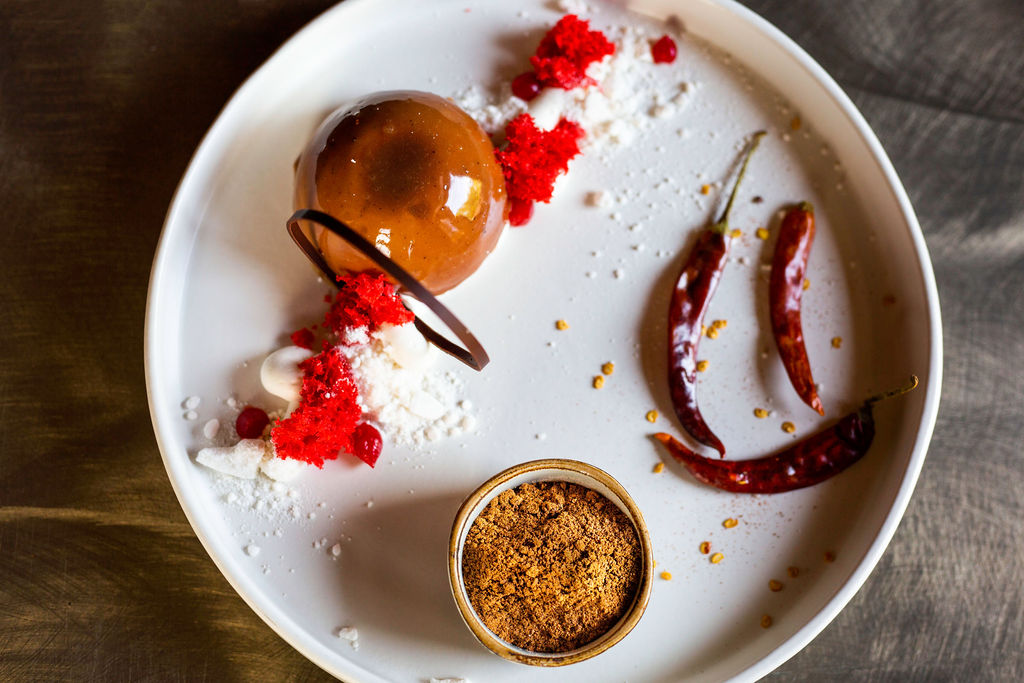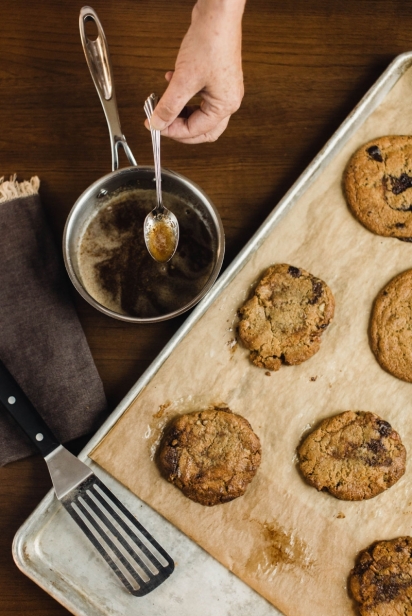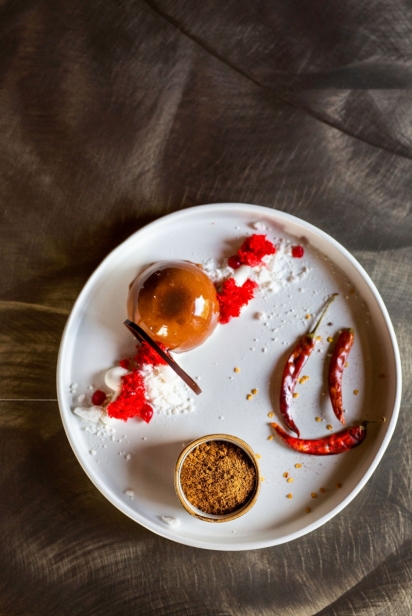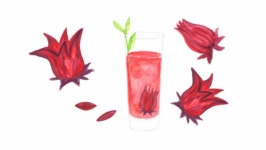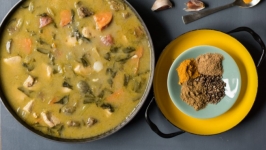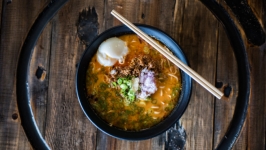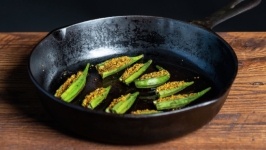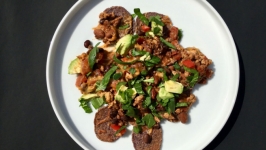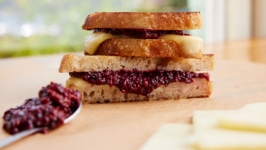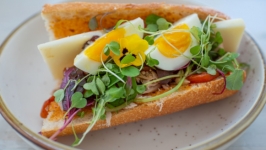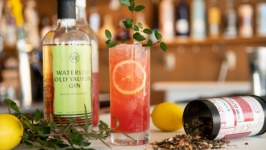Four New Flavors to Use in Desserts
When we have the desire or energy to create a sweet finish to a meal, more than likely it comes from a repertoire of family favorite dessert recipes, those tried-and-true dishes you can make from muscle memory. Maybe you learned to bake chocolate cake as a teenager and still use the same recipe card passed down from your mother or grandmother (because, well, you can’t mess with tradition). Or lemon bars baked every year for your best friend who won’t eat anything else on her birthday. To all those who abide by the expression “If it ain’t broke, don’t fix it,” it’s time to put a creative spin on old standards and experiment with new flavors.
We asked local pastry chefs Alberto Febo-Sanchez of Nineteen at TPC Sawgrass and Allison D’Aurizio, co-owner of 1748 Bakehouse for recommendations to help get you started on a culinary exploration. Based on what they’re using in their sweet creations, they suggested four ingredients that will transform your desserts and add depth to familiar flavor profiles: brown butter, hibiscus, garam masala and chili peppers. These ingredients (and others such as tahini, lavender, smoked paprika or vegetables) introduce elements of tartness, heat and earthy spices, adding a surprising depth and complexity to dishes. While we think of dessert as being sugar-sweet forward, the ingredients cut the sweetness to provide a more balanced combination of flavors.
And who knows, using these ingredients may cause you to carve out more time for dessert prep on a regular basis.
CHILI PEPPERS
In addition to global flavors, chili peppers can be used to add variety and a bit of a kick to desserts. Diners are demonstrating their interest in bolder flavors and hot peppers are finding their way into sweets more frequently. Chilies such as guajillo, ancho, chipotle, Aleppo and Thai peppers can be infused and used in cakes, brownies, ice cream, sauces and ganache. While chocolate is the most common pairing, peppers are also being matched with other flavors such as coffee, caramel and fruit.
“Our guests are becoming more comfortable with heat and spice,” says Febo-Sanchez, which has allowed him to create dishes such as South of the Border Tiramisu, with a guajillo chocolate glaze and a coffee tequila chocolate cake. “Letting the whole peppers infuse in the cream or other liquids such as simple syrup helps to draw out not only the heat but also the flavor of the chili. That way you might not notice the pepper’s kick when you first take a bite of the dessert – the hot sensation is more subtle, almost an afterthought.” An unexpected combination of sweet with heat that makes you wish you had time for dessert every night.
BROWN BUTTER
Who knew such a simple process could transform butter into something even better? D’Aurizio has utilized this not-so-secret ingredient in many of her baked goods and suggests using beurre noisette, the French term for brown butter, to add a nutty flavor to cookies, cakes, icings and savory dishes. “It adds a deeper, more intense flavor than melted or clarified butter,” says D’Aurizio.
How do you make this magical fat? “Melt a stick of unsalted butter in a saucepan over medium heat. After a few minutes it will start to foam. You'll know it's ready when the foam subsides and you smell a nutty aroma. Remove from heat, transfer to a metal or glass bowl and let cool,” says D’Aurizio, adding “Be sure to scrape the sides and bottom of the pan to get all the browned bits.”
Use brown butter as a liquid, or cool it into a solid, then substitute it in recipes for regular butter. Because the cooking process removes the water, the resulting brown butter reduces in volume. One cup of butter will yield 3/4 cup brown butter.
“Make a brown butter frosting - it’s great on everything,” says D’Aurizio. She uses brown butter in Carmelitas, a cookie filled with chocolate and caramel, and in cookie or graham cracker crumb crusts.
For a quick dessert, sauté peaches and brown butter in a cast iron pan for four minutes, then serve with sweetened whipped cream.
GARAM MASALA
The mixture of spices known as garam masala is well-known to anyone familiar with Indian cuisine, and can also be used to add a kick to desserts. Garam masala translates as "warm spice mix" and while the ingredient list varies from cook to cook, it usually includes cardamom, cinnamon, cloves, cumin, black pepper and coriander. You can purchase pre-mixed versions at grocery stores, but it is also fun to experiment in the kitchen and concoct a blend suitable to your own palate and preferences.
“Today’s dessert lovers are eating with their eyes more than ever. As a pastry chef, I am constantly innovating with flavors, using bright colors and creative textures, not only to create an eye-catching presentation, but also to provide a totally new flavorful discovery,” says Febo-Sanchez. “Trying global ingredients such as garam masala is becoming more desirable to diners. Our creativity lies in incorporating these flavors with our local ingredients, creating a new variety of distinctive and unique flavors.”
While tweaking the recipe for his Garam Masala Milk Chocolate Mousse and Decadent Chocolate Cake, the chef varied the amount of spice mixture to ensure it didn’t overpower other flavors. “Use a little bit at a time. You can always increase the amount but you can’t remove the spice once it is added,” says Febo-Sanchez.
Consider substituting a pinch of garam masala for cinnamon or ginger in recipes such as carrot cake, gingerbread or apple pie.
HIBISCUS
Firmenich, the world’s largest privately-owned fragrance and flavor company, named hibiscus its “flavor of the year” for 2019 based on the growing appeal of florals and botanicals in food and beverages. Anyone who has sipped Red Zinger tea is already familiar with this fruity, slightly tart flavor and crimson color. Hibiscus is also a common ingredient in Latin American cuisine in both sweet and savory dishes.
Lucky for us, roselle hibiscus, also called Florida cranberry, grows well in our region and is most commonly available in dried form. You might see it as “Flor de Jamaica” in specialty food markets. The part of the plant used is called the calyx, or the outer shell of the flower. Make sure to use a food grade variety, not the ornamental type grown as a landscape plant.
“Floral elements can be released by steeping fresh or dried hibiscus calyces in either hot or cold water or other liquid,” says D’Aurizio. “Because it has a natural tartness, hibiscus goes well with citrus. I love mixing it in lemon or blood orange curd, the color is just stunning.” She also suggests adding some hibiscus when making simple syrup for lemonade or a sauce to top pound cake. Fresh hibiscus, like other edible flowers, are also perfect for decorating desserts.


